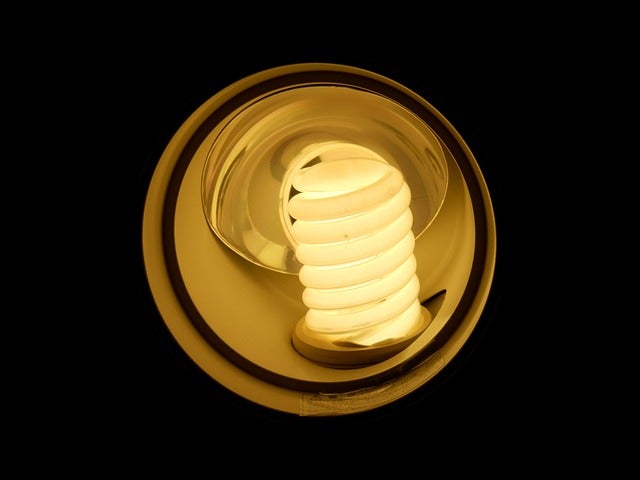By Inês Azevedo, Kenneth Gillingham, David Rapson, and Gernot Wagner.
 Lighting is critical to our livelihoods. Humans have used lighting technology since long before industrialization. For many centuries, this lighting was extremely inefficient, with over 95% of the energy consumed wasted as heat. Recently, the Nobel Prize in Physics was awarded to Isamu Akasaki, Hiroshi Amano and Shuji Nakamura for their remarkable contributions towards highly efficient light emitting diode (LED) technology. A day later, Michael Shellenberger and Ted Nordhaus reignited a long standing debate with an Op-Ed inThe New York Times claiming that these developments are not likely to save energy and instead may backfire. (TheTimes has since corrected a crucial point of the article, and it has published three letters to the editor, including one by a subset of co-authors here.)
Lighting is critical to our livelihoods. Humans have used lighting technology since long before industrialization. For many centuries, this lighting was extremely inefficient, with over 95% of the energy consumed wasted as heat. Recently, the Nobel Prize in Physics was awarded to Isamu Akasaki, Hiroshi Amano and Shuji Nakamura for their remarkable contributions towards highly efficient light emitting diode (LED) technology. A day later, Michael Shellenberger and Ted Nordhaus reignited a long standing debate with an Op-Ed inThe New York Times claiming that these developments are not likely to save energy and instead may backfire. (TheTimes has since corrected a crucial point of the article, and it has published three letters to the editor, including one by a subset of co-authors here.)
As evidence for these claims, Shellenberger and Nordhaus cite research that observes the vast improvements in the efficiency of lighting over the past two centuries having resulted in “more and more of the planet [being] dotted with clusters of lights.†They take this as evidence of how newer and ever more efficient lighting technologies have led to demand increases and, thus, have “led to more overall energy consumption.†Further, they refer to “recent estimates and case studies†that suggest “energy-saving technologies may backfire, meaning that increased energy consumption associated with lower energy costs because of higher efficiency may in fact result in higher energy consumption than there would have been without those technologies.â€
First off, yes, it is likely that many efficiency improvements are associated with some rebound effect. It’s been with us forever, and it’s been known for over a century. More efficient lighting leads to people using more light. Key here is “leads to.†Causality matters. More on that in a minute.
For now, a quick look at the actual technology in question. It turns out the technology developments for LED lighting are, in fact, much greater than previous advances in lighting. Figure 1 [see the pdf] shows the dramatic pace of technology change in LED efficacy. The Nobel Prize was well-deserved: LEDs provide a major energy-saving innovation.
But what about the claim that this efficiency improvement will only lead to more energy use? This claim is simply not justified. Noting that lighting dots the globe at night today when it did not in the 19th century may be confounding correlation with causation. The world is also much wealthier today and the service provided by light from electricity is very different than candlelight. Perhaps earlier lighting would have dotted the globe at night in 1850 too had we been as wealthy as today and had consistent lighting. We cannot say without looking at the evidence.
The evidence we have is quite clear. Shellenberger and Nordhaus say “The I.E.A. and I.P.C.C. estimate that the rebound could be over 50 percent globally,†and they then proceed to talk about “backfire,†a rebound effect of over 100 percent. That’s quite a jump from 50 to 100. What’s missing here is that most studies, including the IEA’s and their own(!), take 60% as an upper bound. The IPCC summarizes the evidence as thus:
“A comprehensive review of 500 studies suggests that direct rebounds are likely to be over 10% and could be considerably higher (i.e., 10% less savings than the projected saving from engineering principles). Other reviews have shown larger ranges with Thomas and Azevedo (Thomas and Azevedo, 2013) suggesting between 0 and 60%. For householdâ€efficiency measures, the majority of studies show rebounds in developed countries in the region of 20-45% (the sum of direct and indirect rebound effects), meaning that efficiency measures achieve 65-80% of their original purposes.â€
We have each performed our own detailed surveys of the literature (Azevedo 2014; Thomas & Azevedo, 2013; Gillingham et al. 2013;Gillingham et al. 2014) and largely agree with these statements from the I.P.C.C. The bottom-line: the evidence for a “backfire†is weak. The rebound effect is clearly there, but first it’s generally relatively smallâ€"especially in developed countries. Perhaps most importantly, where it does existâ€"and it doesâ€"it’s good.
Energy inefficiency can’t be good. That doesn’t yet mean that efficiency alone is sufficient. Every economist worth his or her degree would conclude that we need a price on carbon or a similar instrument. Bonus fact: there’s no direct rebound effect with pricing mechanisms.
As the Nobel Committee notes in its press release: “The LED lamp holds great promise for increasing the quality of life for over 1.5 billion people around the world who lack access to electricity grids.†In short, and as two of us say in a shorter letter to the editor, LEDs alone clearly won’t solve global warming, nor will they solve global poverty. But they are a step in the right direction for both. Thank you, Isamu Akasaki, Hiroshi Amano, and Shuji Nakamura, and to the Nobel Committee for recognizing their work.
Published in full as part of a broader post on “Is There Room for Agreement on the Merits and Limits of Efficient Lighting†by Andrew Revkin on the DotEarth blog of The New York Times. For a shorter take, see our letter to the editor of The New York Times. For a longer take, see “The Rebound Effect and Energy Efficiency Policy.â€
No comments:
Post a Comment